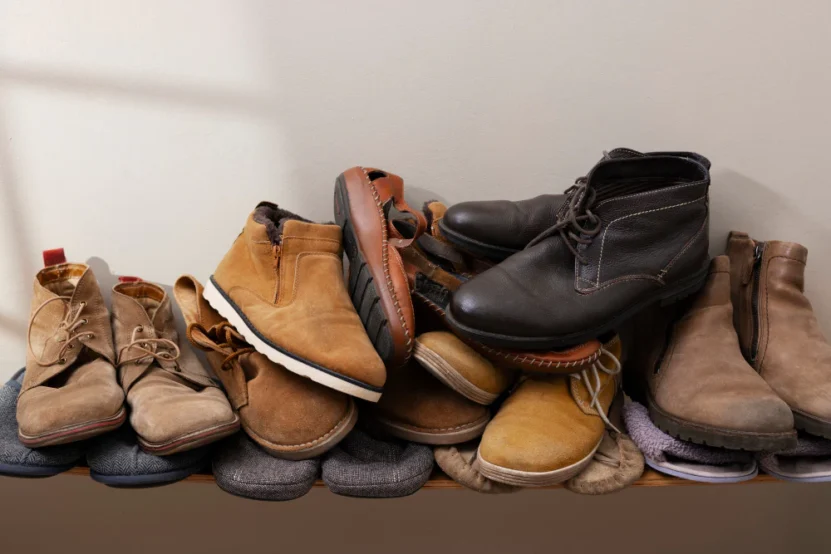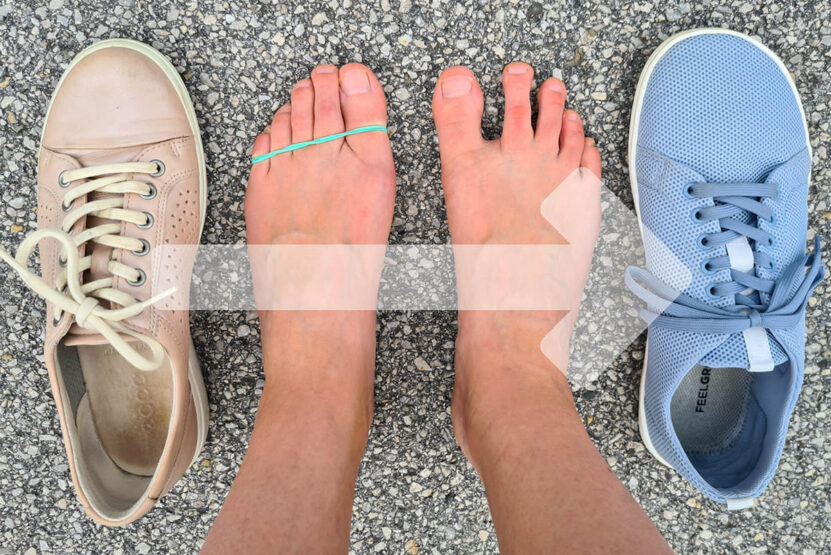Stepping out should be pain-free, but unfortunately, heel pain due to plantar fasciitis can make even simple walks feel like a trek. This common foot condition affects millions, leaving them wondering: are specialized shoes the answer? You’re not alone!
This article aims to be your guide, empowering you to understand when and why plantar fasciitis shoes can become your ally in managing pain and promoting healing. So, lace up your curiosity, and let’s explore the world of supportive footwear and its potential to get you back on your feet with confidence.
Why do you need special footwear?

Heel pain that lingers, even after waking up? Discomfort that flares after sitting or simply taking a few steps? These could be signs that your plantar fascia needs some extra TLC. Here are some telltale indicators that specialized shoes might be the right step towards relief:
Persistent Heel Pain: Does a dull ache or sharp pain greet you in the morning, lingering throughout the day? This classic symptom shouldn’t be ignored.
Post-Rest Discomfort: Even after periods of rest, does your heel feel stiff or achy? This suggests inflammation that specialized shoes can help address.
Activity-Triggered Pain: Does walking, running, or even standing for extended periods make the pain worse? This indicates the need for footwear that cushions and supports during movement.
Remember, self-diagnosis isn’t recommended. Consulting a healthcare professional is crucial for an accurate diagnosis of plantar fasciitis and personalized advice on treatment options, including recommendations for appropriate footwear. So, prioritize a visit to your doctor, and then together, you can choose the right shoes to step towards a pain-free future.
How can the right shoes help you?
Not all shoes are created equal, especially when it comes to battling the heel pain of plantar fasciitis. Unlike their everyday counterparts, plantar fasciitis shoes are specifically designed to offer targeted support and relief. Key features set them apart:
Arch Support: This built-in reinforcement cradles your foot’s natural arch, preventing excessive flattening and distributing pressure evenly. Think of it as a bridge, stabilizing your foot and reducing strain on the plantar fascia.
Heel Cushioning: Imagine walking on clouds! Generous padding in the heel area absorbs shock with each step, cushioning your impact and offering relief from the stabbing pain often felt with plantar fasciitis.
Sole Flexibility: While some support is crucial, excessive rigidity can hinder your natural gait. Plantar fasciitis shoes strike a balance, offering enough flexibility for movement while providing essential stability to prevent further strain.
These features work together to create a supportive environment for your feet, promoting proper alignment, reducing stress on the plantar fascia, and ultimately minimizing pain. It’s like giving your feet a hug from the ground up!
When to use them on a day-to-day basis?

Integrating plantar fasciitis shoes into your daily life isn’t about swapping everyday kicks for a specialized uniform. Think of them as targeted support for specific situations, offering an extra layer of care for your feet. While they might not become your go-to for every occasion, consider them valuable allies in preventing discomfort and promoting healing.
Remember, seemingly low-impact activities can still stress your plantar fascia. Grocery shopping with its standing and uneven aisles, commutes involving hard surfaces and prolonged periods on your feet, and even leisurely strolls – these moments can contribute to heel pain. By choosing supportive footwear for these everyday scenarios, you’re proactively addressing potential triggers and fostering a healthy environment for your plantar fascia.
Consulting a healthcare professional for an accurate diagnosis and a personalized treatment plan is crucial. They can provide guidance on incorporating plantar fasciitis shoes into your routine and suggest other solutions for optimal healing and pain relief. By making informed choices and prioritizing foot health, you can step towards a more comfortable and active future.
How to easily transition to these models?

Integrating plantar fasciitis shoes into your routine requires patience and a gradual approach. Think of it as introducing a new friend to your feet! Here’s how to navigate the transition smoothly:
Start Slow: Don’t dive headfirst into wearing your new shoes all day. Begin with short intervals, perhaps an hour at a time, gradually increasing wear time as your feet adapt. Listen to your body – any discomfort is a signal to take a break.
Expect Adjustments: Your feet are accustomed to their regular footwear, so the increased support and structure of plantar fasciitis shoes might feel different initially. Allow a few weeks for your muscles and ligaments to adjust to the new level of support. Minor soreness is normal, but persistent pain signifies the need to slow down or consult your healthcare professional.
Prioritize Comfort: Comfort reigns supreme! If your new shoes cause discomfort, don’t hesitate to adjust. You may need to experiment with different sizes, laces, or even additional inserts for an optimal fit. Remember, proper fit is crucial for maximizing comfort and therapeutic benefits.
Transition Wisely: Alternate between your regular shoes and plantar fasciitis shoes throughout the day, especially during activities that don’t involve significant impact. This allows your feet to gradually adapt and prevents excessive strain.
Be Patient: Remember, healing takes time: Don’t be discouraged if immediate pain relief isn’t achieved. Consistent, gradual use of your plantar fasciitis shoes, combined with other treatment options recommended by your healthcare professional, will pave the way for long-term pain management and improved foot health.
By following these tips and respecting your body’s feedback, you can smoothly transition to your new plantar fasciitis shoes and experience the potential benefits of increased support and pain relief.
Stepping with confidence starts with understanding. Throughout this article, we’ve explored the nuances of using plantar fasciitis shoes – not as a miracle cure, but as a valuable tool in your foot health journey. Wearing them strategically, during activities that put stress on your plantar fascia, can significantly alleviate pain and aid in recovery.
Remember, these supportive shoes are just one piece of the puzzle. A comprehensive treatment plan often involves stretches, exercises, and recommendations from your healthcare professional. But by incorporating plantar fasciitis shoes into your routine wisely, you’re taking an active step towards improved mobility and enhanced quality of life. So, lace up with knowledge, prioritize foot health, and enjoy the freedom of pain-free steps!
